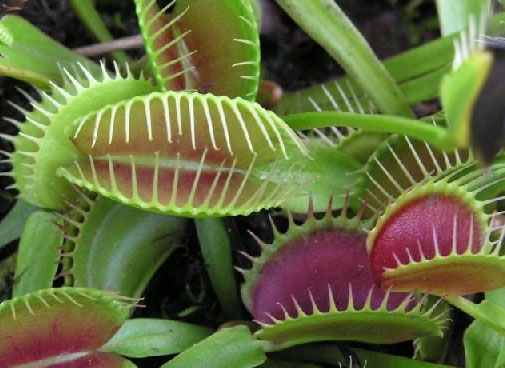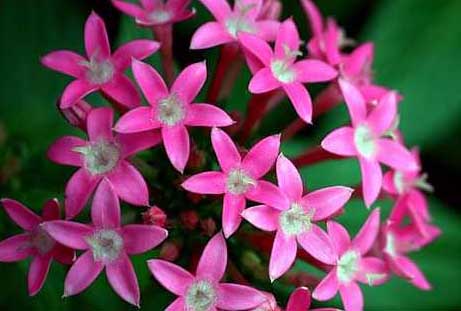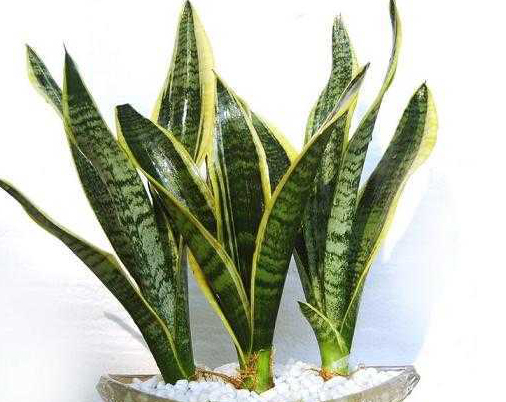Flytrap planting method how to raise potted flytrap?
Flytrap (dionaea muscipula), a small insectivorous plant of the genus Orchidaceae, all belonging to only one species, native to the sandy marshes of southern North Carolina and northern South Carolina. The plant type is green all the year round, the flower is white, and the florescence is 5-7 months. It is an interesting ornamental plant.
Clip-type trap with sensory hairs located on both sides of the trap, usually 3. If you touch 2 of the sensory hairs or one of the roots continuously within 1 second or less than 10 seconds, the trap will close quickly, and if you continue to touch it, the trap will continue to clamp.
Because only the crawling of the prey can have a continuous touch on the sensory hair, the flytrap can easily tell the crawl of the prey from the occasional touch of an object, and can adjust the degree of clamping according to the degree of struggle of the prey.
Flytrap is a very popular insectivorous plant, potted plants can be used in Xiangyang windowsill and balcony to watch, can also specialize in planting trough training, unique interest.
Before planting the flytrap, let's take a look at the-annual growth cycle of the flytrap:

The flytrap goes dormant in winter. When dormant, most of the leaves will wither, and the plant looks like a fast-hanging plant. However, if you dig up its underground stem, you can find that its underground stem is still in vain. (note: dormancy temperature must be at 0: 8 degrees Celsius, higher than 8 degrees Celsius will not dormancy.)
In spring, the sleeping flytrap, stimulated by the sun and temperature, begins to grow long and tall leaves, and the hibernating flytrap sometimes produces a lot of lateral buds. After a while, a very long flower stem appeared, and the flowers on the flower stem basically bloomed day by day and would not be finished in a day. In a few weeks, these flowers will be almost gone. Then summer came. (note: flowering consumes nutrients and affects the growth of leaves, so you can cut it off if you don't want it to bloom.)
Under the stimulation of the strong sunlight in summer, the color inside the flytrap clip slowly turned red. The clamps in this period are usually the largest and the largest in number! You can enjoy it-the bloody □ facing the sky!
Then, the autumn became more and more intense. Unlike spring and summer, the clip extends to the sky, most of which are flattened on the ground. The temperature difference between day and night becomes larger, which stimulates the glands inside the clip to turn red. As the sunshine becomes shorter and the temperature decreases, you can begin to reduce the water supply at the end of autumn. But be careful. Still don't let the basin of the flytrap completely dry. Introduction to the planting method of flytrap
The predation mechanism of the flytrap is a set of organic arrangement process. First of all, the flytrap secretes honey to attract insects to approach. When the insect touches the sensory hair of the flytrap twice, the two leaves will close quickly. The interlocking interlocking of the spiny hairs growing on the leaf margin to prevent insects from escaping. Then the flytrap secretes digestive juice to digest the insects to obtain nutrients.
Introduction to the planting method of flytrap-
[plant archives]-
English name: flytrap
Scientific name: Dionaea muscipula
Aliases: Cordyceps, Cordyceps sinensis, Venus' fly trap, fly hell
Family: Droseraceae of Brassicaceae
Genus: Dionaea
Distribution: fly-catching grasslands are found along the east coast of North America, and their natural origins are mainly in North Carolina, South Carolina and Florida.
Morphological characteristics: flytrap belongs to vascular plants, with complete roots, stems, leaves, flowers and seeds. The most important and obvious part is the leaf, which not only has the function of preying on insects, but also has obvious spiny hairs and red sessile glands, which looks like a big mouth with sharp teeth.
The planting method of flytrap
◆ illumination: flycatcher is a light-loving plant, which can accept all-day sunlight, and the light can make the plant colorful, but it can be shaded properly in summer to avoid high temperature.
◆ moisture: flytrap is sensitive to salt. Too high mineral concentration in the water will cause the plant to decline until death, showing that the plant stops growing or becomes smaller, and the unaged clips and leaf edges begin to die. Therefore, water sources with low mineral concentrations must be used. During the growing season, the substrate can be kept in high humidity, and the pot immersion method can also be used to plant. During the dormant period, it needs to be dry but not thoroughly dry to prevent the plant from rotting.
◆ humidity: the air humidity of the flytrap should be kept above 50%. The general planting environment can be satisfied and there is no need for special humidification.
◆ temperature: the suitable temperature for growth is 20-30 ℃, dormancy occurs below 10 ℃ (most leaves wither during dormancy, only a few small leaves remain), and can survive at 0-38 ℃.
◆ substrate: the cultivation of flytrap requires the use of good water retention, acidic or even strong acidic substrate, the PH value is between 3 and 5. You can use a mixture of pure water moss or 2 parts of peat plus 1 part of perlite or river sand, and basin soaking can use a mixture of 1 part of peat, 1 part of perlite or river sand.
◆ nutrients: in the growing season, use general compound fertilizer and other diluted 5, 000 times spray foliar, 1-2 times a month. Fertilization would rather be applied with thin fertilizer frequently, not too high concentration, so as to avoid serious consequences of fat injury or even death. Do not apply fertilizer at will without experience. You can also use the feeding method, feeding insects or raw meat, and the size should be appropriate, so that the clip can completely cover the food, the number of clips can not exceed 1 / 3 of the total number of clips.
◆ disease: high temperature in summer is easy to rot the stem, good ventilation, root cooling, good light, large temperature difference between day and night all help to reduce the occurrence of the disease. If it is found that part of the stem has rotted, the rotten part should be thoroughly removed immediately, then soaked in fungicide for 5 minutes, and then implanted into the sterilized clean substrate.
The breeding method of flytrap-
◆ sowing: the seeds of flytrap should be sowed as soon as possible after harvest. The longer the time is, the lower the germination rate will be, and the preservation time is no more than 12 months. Sowing can be directly sprinkled on a clean substrate surface (mixed peat or pure water moss can be used), the surface is not covered with soil or covered with 1-3 mm high fine peat or fine-grained red jade soil to help fix the root system, maintain high humidity and bright light, the temperature is maintained at 15-30 degrees, germinate in a month or so, and it takes 3-5 years to grow up.
◆ leaf insertion: peel the whole leaf from the mother plant and place it obliquely or horizontally on a clean substrate such as water moss to maintain high humidity and bright light. Buds can grow in about 2 months.
◆ ramets: flytraps often grow lateral buds. When they are large enough, they are separated from the mother plant and cultivated alone. Sometimes buds grow on flower stems, and they can also be cultivated as ramets. )
[more Encyclopedia of plants]
Tequila, canna, other flowers, forget-me-not dandelions, Dendrobium candidum, Taxus, kapok, cotton, sweet-scented osmanthus and sea crabapple flowers.
Home fengshui plant bedroom fengshui plant plum blossom aloe jasmine radiation protection plant potted plant potted plant drug plant
Mistletoe indoor flower rich tree evergreen potted production of red palm mint stone flower geranium garden crab claw orchid plain sailing
Tiger Pilan Kunlun snow chrysanthemum water lily flowerpot violet magnolia primrose mimosa blue witch hydroponic cyclamen dripping Guanyin
Flycatcher seed how to plant flytrap plant flytrap is also a well-known carnivorous plant, mainly to catch flies, therefore, it is sought after by many flower friends, for the flytrap planting method, the editor will provide you with detailed planting steps, generally sowing seeds, do you want to know how to grow flytrap? Come and try it!
Potted flytrap can be used in sunny windowsill and balcony, and can also be used for planting trough culture. Flytrap is known as the carnivorous plant in nature. The planting steps of flytrap seeds are as follows: 1. Prepare the flowerpot for sowing: fill the flowerpot with the substrate and put it in a glass tank or water basin with pure water left, so that the substrate absorbs water to the surface, and then spray the surface with a spray bottle (fog spray). 2. Sowing: carefully open the packaging of the flytrap seeds, spread the flytrap seeds evenly on the surface of the substrate, and cover with three centimeters of culture soil. 3. Spray water: spray the surface with a spray bottle (spray) and spray carefully to avoid flytrap seeds being washed away. 4. Cultivation: put the flowerpot sowing the flytrap seed together with the glass tank or water basin on the inside of the sunny windowsill. If it is a water basin, a plastic cover with a top opening should be added to moisturize. Pay attention to timely replenishment of water, generally about 10 days germination (20 degrees). 5. Seedling: it can be transplanted when the flytrap seedlings grow 2 or 3 true leaves. Flytrap is sensitive to water quality, watering needs to use water with low mineral content (such as Rain Water, pure water, etc.); high temperature in summer is easy to rot the stem, good ventilation, root cooling, good light, large temperature difference between day and night all help to reduce the occurrence of diseases; if fertilization is needed, it can be sprayed at or above 1 / 5 of the indicated concentration!
- Prev

Main diseases and insect pests of starry flowers and their control
Symptoms of whitefly: the young leaves of the plant faded green and turned yellow, and finally the whole plant wilted and died. Prevention and control: (1) use anti-insect net to block the invasion of external insect pests. (2) thoroughly fumigate the cultivation place and remove weeds before cultivation
- Next

How to raise tigeria tigeria cultivation method
Tigertail orchid is named thousand-year orchid and tiger orchid. It is a perennial herbaceous flower of agave family. Its leaves are upright, thick in texture, linear and lanceolate. There are white and dark green tiger-tail stripes on its leaves. It is strange and interesting. There are also varieties of Sanse-tail orchid and short-leaf Sanse-tail orchid
Related
- Fuxing push coffee new agricultural production and marketing class: lack of small-scale processing plants
- Jujube rice field leisure farm deep ploughing Yilan for five years to create a space for organic food and play
- Nongyu Farm-A trial of organic papaya for brave women with advanced technology
- Four points for attention in the prevention and control of diseases and insect pests of edible fungi
- How to add nutrient solution to Edible Fungi
- Is there any good way to control edible fungus mites?
- Open Inoculation Technology of Edible Fungi
- Is there any clever way to use fertilizer for edible fungus in winter?
- What agents are used to kill the pathogens of edible fungi in the mushroom shed?
- Rapid drying of Edible Fungi

